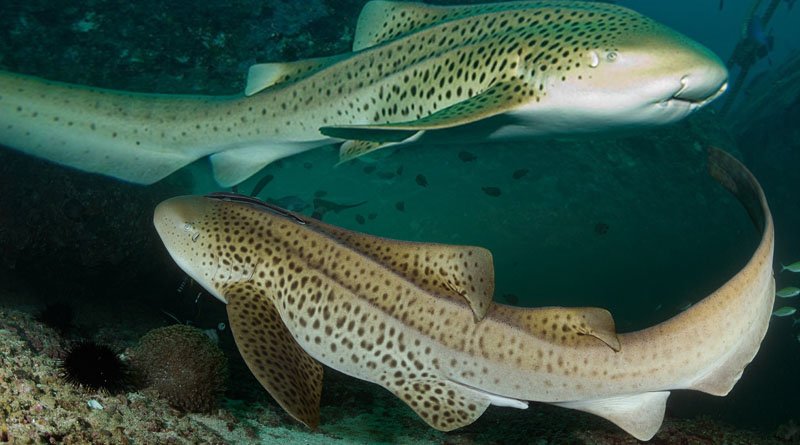The zebra shark (Stegostoma tigrinum), a member of the Stegostomatidae family, was named Kathlyn, and Kathlyn was a little shark making big history.

Nesha Ichida, a scientist, concentrated intently on the tiny spotted shark she was holding as it bobbed on the surface of the turquoise, warm ocean water. The zebra shark (Stegostoma tigrinum), a member of the Stegostomatidae family, was named Kathlyn, and Kathlyn was a little shark making big history. Kathlyn and Charlie, two male zebra sharks released earlier, were a beacon of hope for scientists working to rebuild the wild population of zebra sharks.
A large shark that undergoes a radical transformation in coloration with age, they live in shallow coral reef habitats in warm tropical waters.
As the zebra shark ages, its black-and-white stripes are replaced by tiny black dots on a tan body, which makes it look a lot like a leopard. They can find food in these places thanks to their ability to squirm into small cracks and caves, including small fish, snails, sea urchins, crabs, and other small invertebrates.
Zebra shark meat is consumed by many inshore fisheries and is sold fresh or salt-dried in Indonesia, Thailand, Malaysia, the Philippines, and other nations. Shark fin soup is made with its fins and liver, which are used for vitamins.
ReShark is a global initiative that enlists the aid of scientists and shark nannies to release zebra sharks raised in aquariums into marine protected areas like Raja Ampat. These gentle predators have been bred from eggs to pups to juveniles in 44 aquariums by a group of 75 partners from 15 different countries.
Future zebra shark pups will be released into marine protected areas that conservation rangers patrol, just like Kathlyn and Charlie were. It took years to get here, but the project represents the first-ever attempts to restore sharks in areas where they are extinct.
Scientists frequently rewild animals on land, but until now, no one has attempted to do the same with endangered sharks. The team has successfully released the first two baby sharks, named Charlie and Kat, and plans to do the same with 500 more over the coming years, according to a press release from National Geographic.
The same framework, according to scientists, may be applied to other threatened shark species, gradually “rewilding” their dwindling populations and providing them with a much-needed boost in population.
The project’s website states that the “ReShark collective is committed to ensuring that work happens shoulder-to-shoulder with local communities, government agencies, elected officials, and leading conservationists” wherever it is that it is doing its work. Our aim is to make sure that our work is environmentally sound, culturally sensitive, and beneficial to the surrounding communities and the environment.
